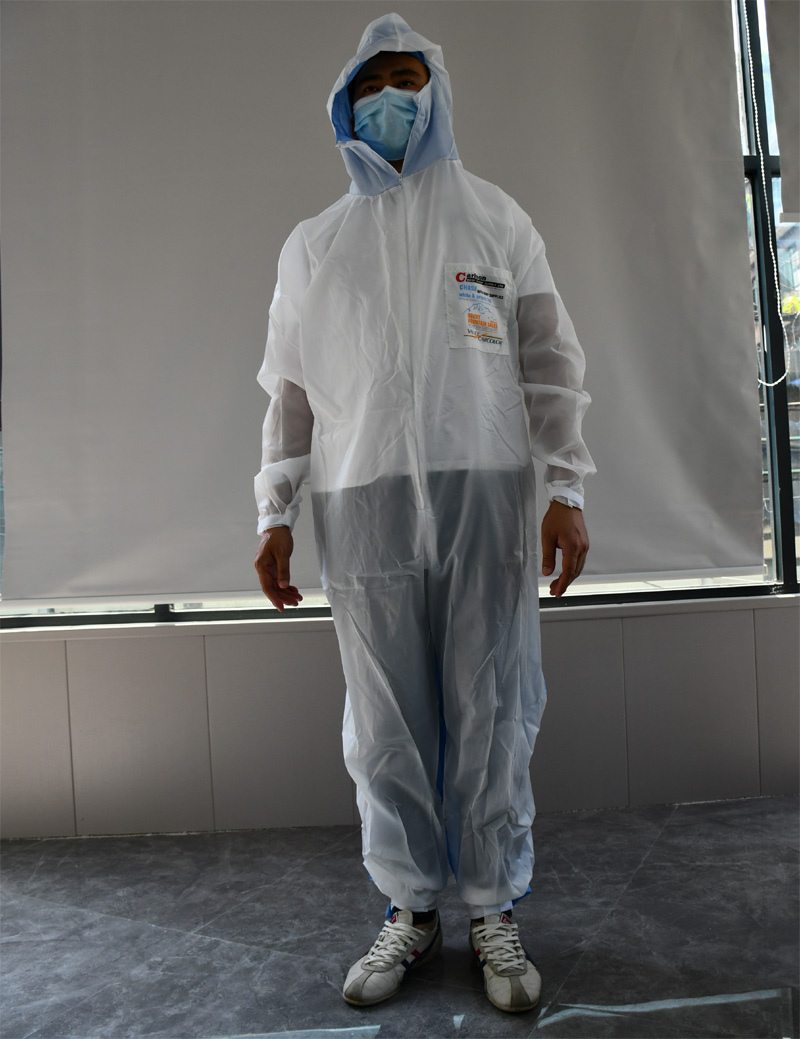Welcome to三一商贸,The company is Disposable Clothing、R & D and manufacturers,Quality assurance.
Welcome to三一商贸,The company is Disposable Clothing、R & D and manufacturers,Quality assurance.
当前位置:home > EVENTS > Product News»
clean room coveralls,clean room coveralls factory,clean room garments factory,clean room clothing requirements factory,clean room supplies factory,cleanroom gown factory,clean room hat factory

The mask bacterial filtration efficiency (BFE) detector is mainly applicable to the testing of mask bacterial filtration efficiency performance by metrological verification departments, scientific research institutes, medical mask manufacturers and their relevant testing departments. It mainly meets the requirements of b.1.1.1 test instrument of bacterial filtration efficiency (BFE) test method in Appendix B of technical requirements for medical surgical masks (yy0469-2011). It also meets the requirements of ASTM f2100, ASTM f2101 and en 14683 standards.
Product introduction:
The mask bacterial filtration efficiency (BFE) detector adopts the method of simultaneous comparative sampling with two gas paths, which improves the accuracy of sampling. It is suitable for the performance test of mask bacterial filtration efficiency by metrological verification departments, scientific research institutes, mask manufacturers and other relevant departments.
Compliance with standards:
Appendix B bacterial filtration efficiency (BFE) test method in yy0469-2011 technical requirements for medical surgical masks, section b.1.1.1
Q / 0212zrb003-2011 bacterial filtration efficiency (BFE) detector for medical surgical mask
Astmf2100, astmf2101, European en14683
Product principle:
It is composed of aerosol generation system, aerosol chamber and aerosol transmission device, negative pressure cabinet, 28.3l/min sampler, etc. the whole detector is uniformly controlled by the console. The console adopts microcomputer control system to coordinate and control the work of aerosol generation system, transmission system, negative pressure cabinet and sampling system, and display the working state in real time, and the whole measurement work is completed automatically.
Technical features:
Negative pressure test system to ensure the safety of operators;
Peristaltic pump is built in the negative pressure cabinet, and a and B liquid impact samplers;
The flow of peristaltic pump can be set;
The spray flow volume of the special microorganism aerosol generator can be set and the atomization effect is good.
Embedded high-speed industrial microcomputer control;
10.4-inch industrial high brightness color touch screen;
USB interface, supporting USB disk data transfer;
High brightness lighting lamp is built in the cabinet;
Ultraviolet disinfection and sterilization lamp is built in the cabinet;
Built in leakage protection switch to protect the safety of operators;
The inner layer of the cabinet is made of stainless steel, the outer layer is sprayed with plastic cold-rolled plate, and the thermal insulation and flame retardant design between the inner and outer layers;
The front switch type glass door is convenient for the experimental personnel to observe and operate;
Detachable support with adjustable height;
Supporting and moving castors.
Classification method of protective clothing:
The importance of chemical protective clothing is well known to many people. It can protect against the erosion of chemicals and has much higher chemical protective ability than ordinary work clothes. However, what principle is used to realize the anti chemical ability of anti chemical clothing? To understand this, we must first know the erosion process of chemicals.
Protective principle of chemical protective clothing:
Chemicals are liquid, gaseous and solid. There are two ways for chemicals to pass through clothing: penetration and penetration. Penetration refers to the process that chemicals penetrate through the gap of clothes from the outside to the inner surface, which is a physical process; Penetration is a chemical process. Chemicals are first adsorbed from the outer surface of the fabric, then reach the inner surface of the fabric through molecular movement, and finally analyzed from the inner surface of the fabric.
The protection of chemicals mainly refers to two parameters, namely penetration time and penetration rate. Infiltration is a slow process. At first, the infiltration rate is very low, then gradually increases, and finally reaches equilibrium. For the determination of standard penetration time, the European standard is that the penetration rate reaches 1.0 μ g/cm2. min。 Standard penetration time is an important reference data for safe wearing time.
In the actual wearing process of chemical protective clothing, when the chemical protective clothing contacts a large amount of chemical liquid, the penetration process has begun. With the extension of the wearing time of chemical protective clothing, the penetration rate gradually increases, but for the repeatedly worn chemical protective clothing, we can not accumulate the time of contact with chemicals, nor can we determine what level the penetration rate of chemicals reaches when wearing, so we can not determine whether the chemical protective clothing can provide effective protection. Moreover, the tests of clothing protection are destructive. If its protection is determined, this chemical protective clothing can no longer be worn.
Therefore, in order to provide more safe and effective protection, foreign developed countries have now launched "limited use chemical protective clothing", which is supported by detailed test data and can be discarded after use. In this way, the price of each chemical protective clothing can be much lower than that of reused chemical protective clothing, which not only reduces the cost, but also ensures the safety and effectiveness of protection.
Comparison between European standard and American Standard:
Type 1 air tightness = class a air tightness
Type 2 non air tightness = class B non air tightness
Type 3 liquid infiltration dense type and Type 4 spray penetration dense =C class general liquid chemicals.
Type 5 solid particle dense type = class D solid particle chemical
Type 6 limited splash compact

Disposable clothing company specializes in the sales of disp…